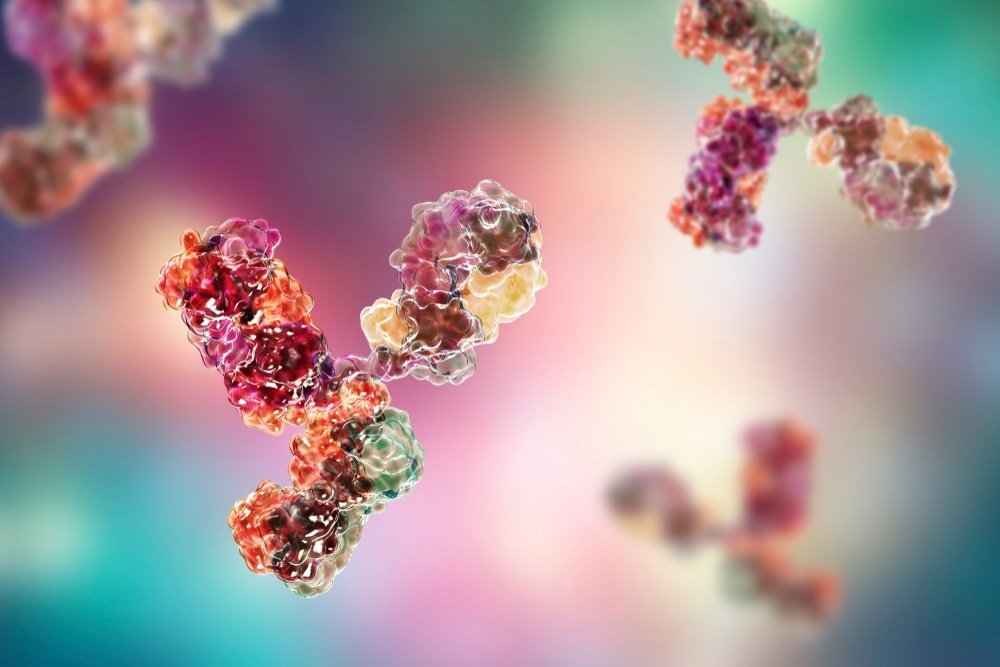
[ad_1]
In a latest examine printed in Nature Communications, a bunch of researchers assessed CSX-1004, a monoclonal antibody (mAb), for its efficacy in reversing fentanyl overdose primarily based on its excessive affinity for fentanyl, constructive animal mannequin outcomes, and secure pharmacokinetic profile, positioning it as a possible answer within the opioid disaster.

Background
The opioid disaster in the US (U.S.) has escalated with opioid-related deaths, largely as a result of illicit fentanyl and its analogs, reaching 74,808 in a 12 months, accounting for 90% of opioid fatalities. The flexibility of fentanyl to get into mu-opioid receptor websites quick, coupled with excessive efficiency, is why fentanyl has the next abuse susceptibility.
Naloxone is presently used as an antidote for opioid overdose, although its utility isn’t prolonged to prophylaxis measures; apart from, its results don’t final for lengthy. The issue manifests itself in fentanyl overdoses, significantly in WCS instances. Moreover, most instances of an overdose happen alone, and therefore naloxone isn’t given on time. Due to this fact, there’s an pressing requirement for extra analysis resulting in the event of potent, sustained therapeutics for a similar.
Concerning the examine
Within the current examine, all analysis protocols had been authorised by respective Institutional Animal Care and Use Committees (IACUCs), adhering to moral laws. Mouse experiments of the Scripps Analysis Institute in testing the effectiveness of CSX-1004 towards fentanyl had been carried out utilizing six-eight week previous Swiss Webster.
An adherent rat toxicology examine on the Illinois Institute of Know-how Analysis Institute, in accordance with good laboratory observe rules, had an equal variety of female and male Sprague Dawley rats employed to establish the security and pharmacokinetics of CSX-1004. Non-human primate (NHP) research involving squirrel monkeys had been carried out at McLean Hospital to evaluate the translational efficacy of CSX-1004 towards fentanyl and its selectivity in the direction of different opioids.
For floor plasmon resonance (SPR) testing, numerous fentanyl derivatives and opioid peptides had been sourced from Cayman Chemical or Sigma Millipore. Compounds reminiscent of fentanyl hydrochloride, carfentanil, and naloxone hydrochloride are made in phosphate buffered saline in mice research. In numerous animal research, CSX-1004 got here from both KBI Biopharma or in-house manufacturing. For NHP research, opioids had been supplied by the Nationwide Institute on Drug Abuse (NIDA)/ Nationwide Institute of Well being (NIH) Drug Provide Program, and CSX-1004 was equipped by Cessation Therapeutics.
Direct SPR binding assays had been performed utilizing a Biacore S200 instrument, whereas aggressive assays employed a Biacore 3000 instrument, each involving detailed procedures to measure the binding kinetics of CSX-1004 to fentanyl derivatives. Feminine Swiss Webster mice had been utilized in research inspecting the reversal of fentanyl antinociception and respiratory melancholy. NHP research utilized grownup squirrel monkeys for respiration research. They had been performed in a custom-made whole-body plethysmograph with numerous experimental phases to evaluate the results of CSX-1004 and different opioids.
Information evaluation and statistics had been performed utilizing a within-subject design, permitting every topic to function its management. Varied software program instruments, together with GraphPad Prism and PKAnalix, had been utilized for knowledge evaluation, guaranteeing a complete analysis of the outcomes.
Research outcomes
CSX-1004, a completely human IgG1λ mAb, was developed by a course of involving immunization of OmniRat with an opioid conjugate vaccine and subsequent B-cell sorting with opioid affinity probes. The antibody’s opioid binding profile was decided utilizing SPR, revealing excessive affinity for a variety of fentanyl analogs (FAs). CSX-1004 demonstrated notable flexibility in binding throughout numerous modifications on the R1, R2, and R3 positions of FAs. Nonetheless, alterations at R4, R5, and R6 positions resulted in a lower in affinity, with sure substitutions virtually fully abolishing binding.
In mouse fashions, CSX-1004 successfully reversed fentanyl-induced antinociception and considerably mitigated respiratory melancholy attributable to carfentanil, an analog stronger than fentanyl. The reversal impact was speedy and sustained, showcasing the potential of CSX-1004 as a remedy for opioid overdose. Moreover, the antibody was discovered to bind fentanyl in handled mouse serum, indicating a robust correlation between antibody focus and fentanyl binding.
The protection and pharmacokinetic (PK) profile of CSX-1004 had been evaluated in a rodent mannequin following Good Laboratory Apply (GLP) requirements. Rats administered various doses of the antibody confirmed no vital antagonistic results, and the pharmacokinetic parameters had been constant throughout the examine. Moreover, an in vitro tissue cross-reactivity (TCR) assay revealed no vital binding of CSX-1004 to a variety of regular human tissues, suggesting a positive security profile. The PK profile in monkeys mirrored that in rats, with a barely longer elimination half-life.
In a NHPmodel, CSX-1004 demonstrated the flexibility to offer multi-week safety from fentanyl-induced respiratory melancholy. The antibody considerably flattened the fentanyl dose-response curve, indicating a marked shift in efficiency and extended efficacy. The impact was each dose and time-dependent, with the very best dose exhibiting sustained influence over a number of weeks.
The specificity of CSX-1004 was additional highlighted in research involving different opioids. Whereas the antibody successfully lowered the efficiency of fentanyl in numerous assays, it didn’t have an effect on the dose-response curves of non-fentanyl opioids like alfentanil, oxycodone, and morphine. This selectivity aligns with the anticipated in vitro binding profile of the antibody.
Moreover, CSX-1004 alone didn’t influence regular respiration, additional supporting its potential as a focused remedy for fentanyl overdose with out affecting the efficacy of different opioids. These findings underscore the potential of CSX-1004 as a novel therapeutic technique in combating opioid overdoses, particularly these involving fentanyl and its potent analogs.
[ad_2]